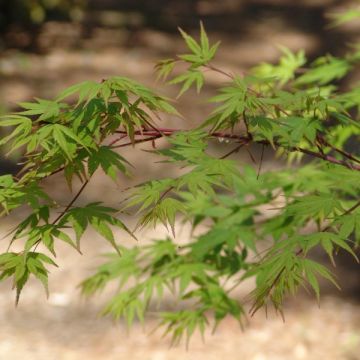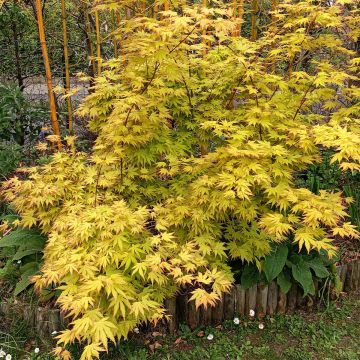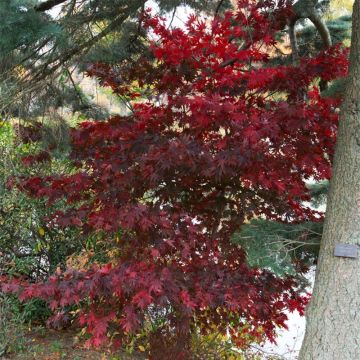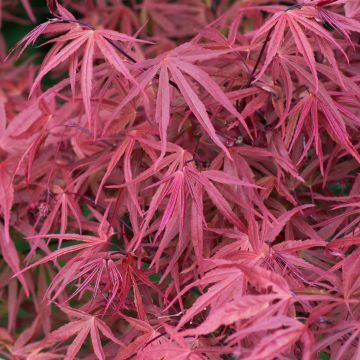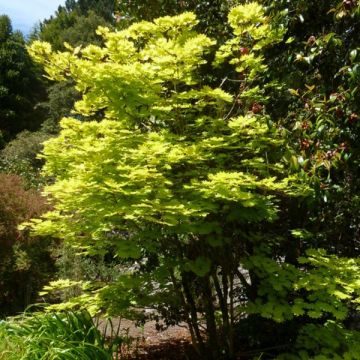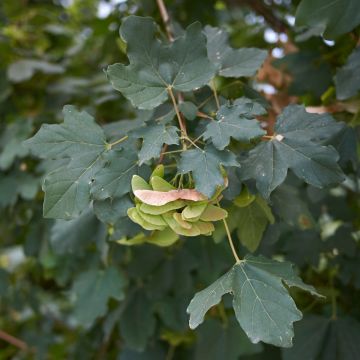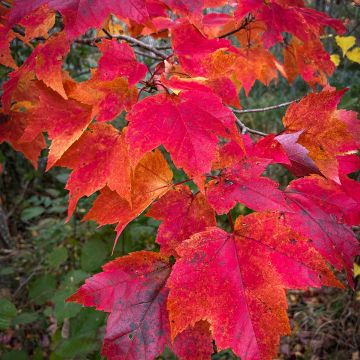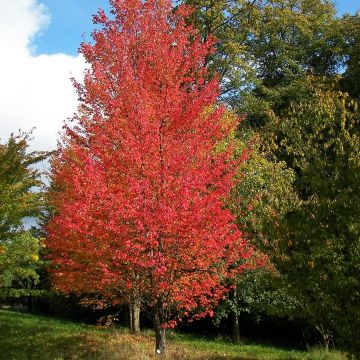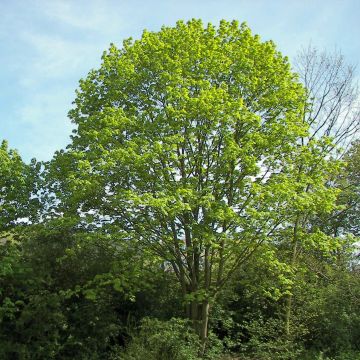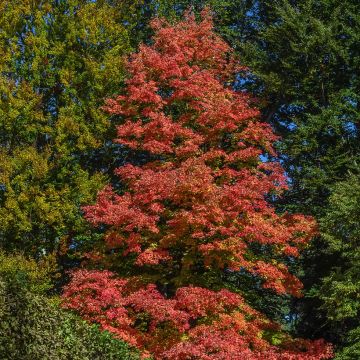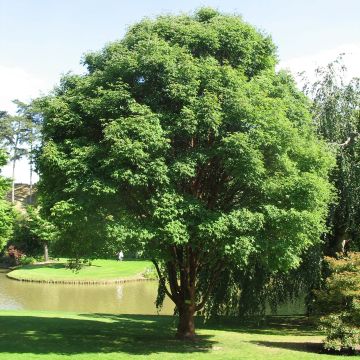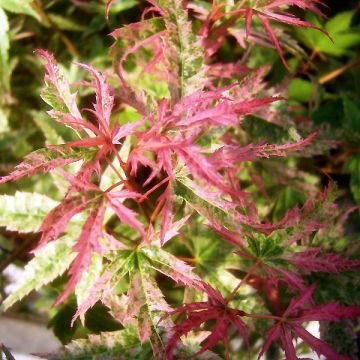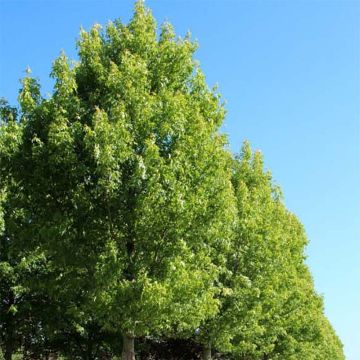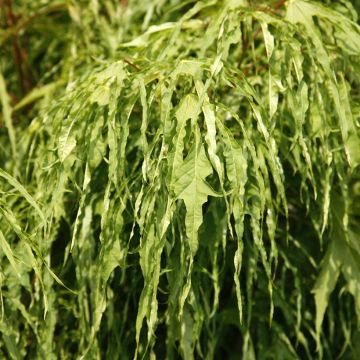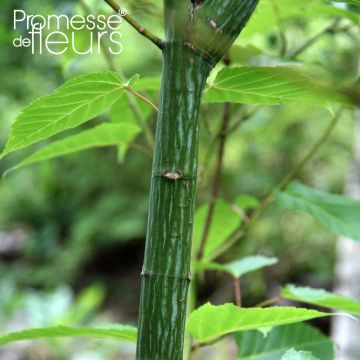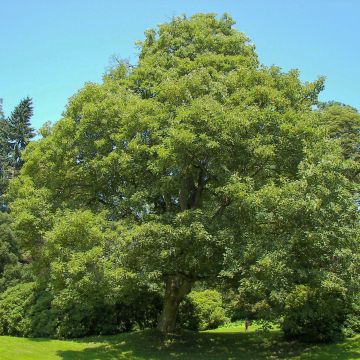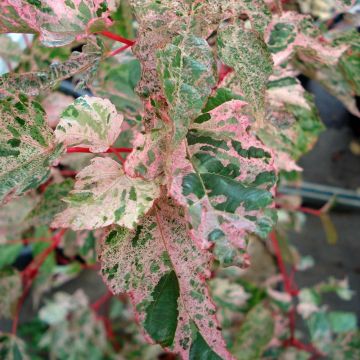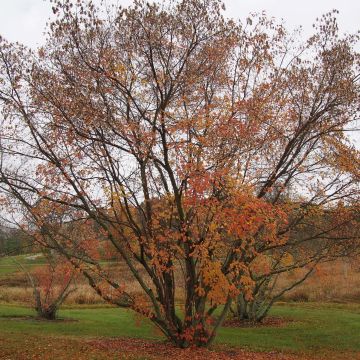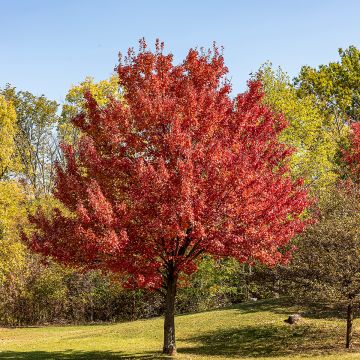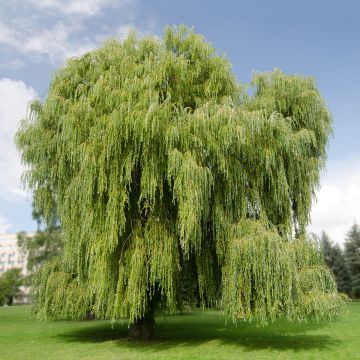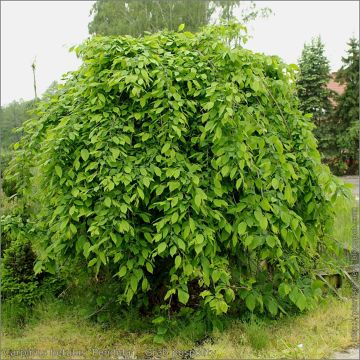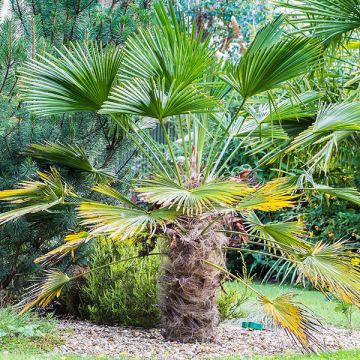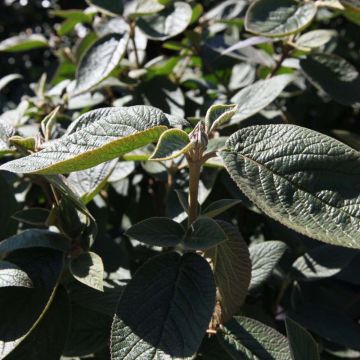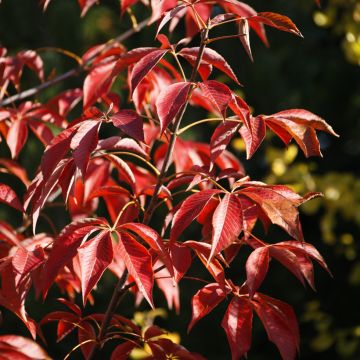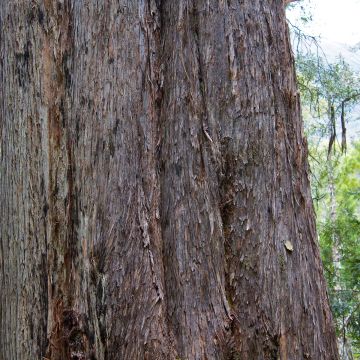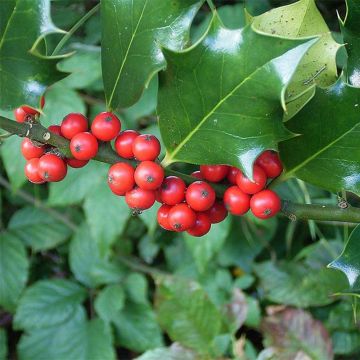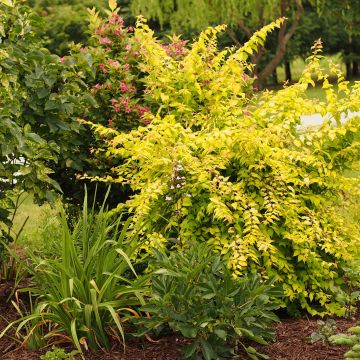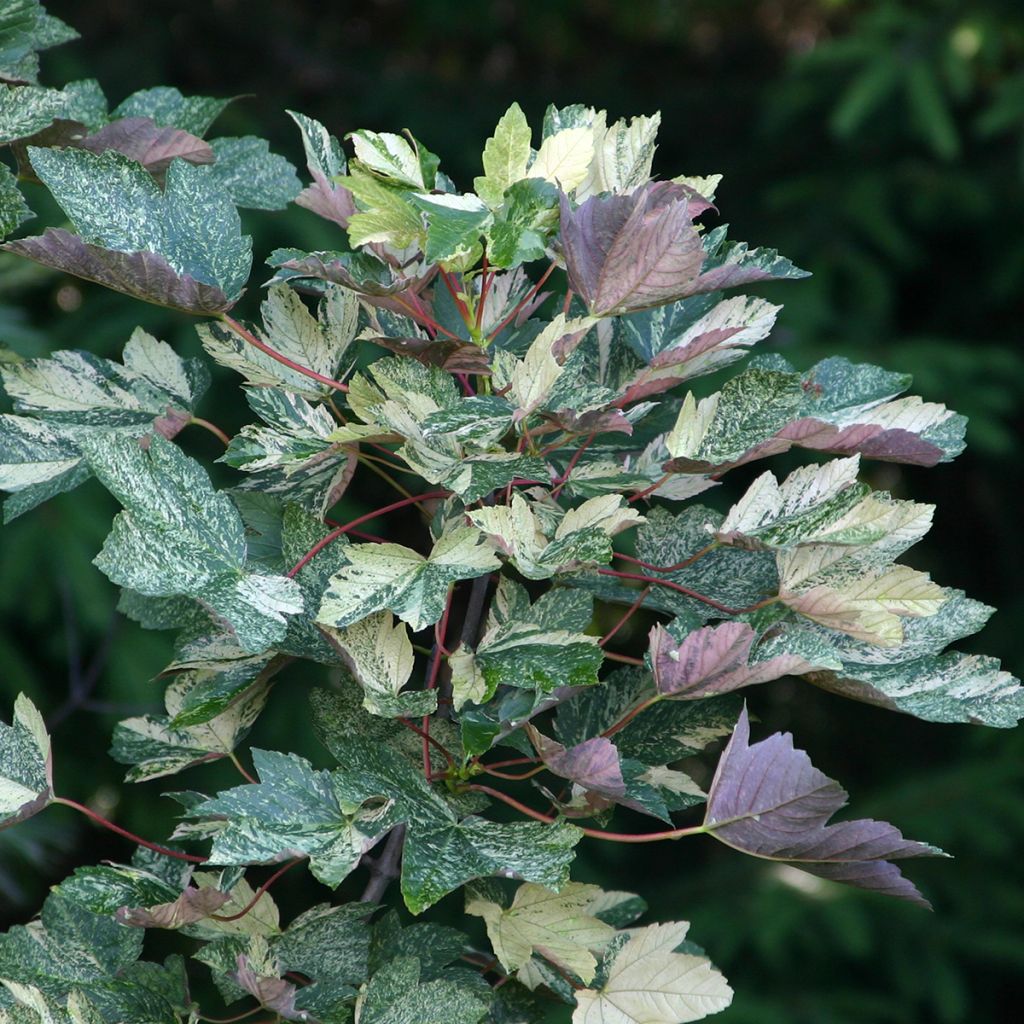

Acer pseudoplatanus Foliis Atropurpureis Argenteovariegata - Maple
Acer pseudoplatanus Foliis Atropurpureis Argenteovariegata - Maple
Acer pseudoplatanus Foliis Atropurpureis Argenteo
Sycamore, Sycamore Maple, Great Maple
Why not try an alternative variety in stock?
View all →Order in the next for dispatch today!
Dispatch by letter from €3.90.
Delivery charge from €5.90 Oversize package delivery charge from €6.90.
Current delivery delay: 1 day.
More information
This item is not available in your country.
Schedule delivery date,
and select date in basket
This plant carries a 24 months recovery warranty
More information
We guarantee the quality of our plants for a full growing cycle, and will replace at our expense any plant that fails to recover under normal climatic and planting conditions.
From €5.90 for pickup delivery and €6.90 for home delivery
Express home delivery from €8.90.
Does this plant fit my garden?
Set up your Plantfit profile →
Description
The Acer pseudoplatanus 'Foliis Atropurpureis Argenteovariegata' is a variety of Sycamore Maple of Polish origin, very rare in cultivation. It is characterised by a marbled green palmate foliage that is irregularly variegated with white, sometimes with simple dots, sometimes in large patches. The green is very dark, accentuating the variegation's visibility, and the leaf's underside is purple-pink. It is undoubtedly a very ornamental variety with slow growth and moderate development. In autumn, it turns bright yellow and orange before falling. All these beautiful shades occur in sunny exposure and partial shade to brighten up a slightly dark corner of the garden.
Native to mountainous regions of Europe, the Acer pseudoplatanus, not to be confused with the Acer platanoides, is known as Sycamore Maple, False Plane Tree, Great Maple or Mountain Maple, less commonly White Maple, depending on the region. It is a large forest tree of the maple family that can reach a height of 35 m (115ft) to 40 m (131ft), often paired with spruce and beech. This light and semi-shade tree can live up to 500 years. Its wood is commonly used for the production of musical instruments.
The Acer pseudoplatanus 'Foliis Atropurpureis Argenteovariegata' is a named variety, described and introduced into commerce in 1909 by Feliks Rożyński. It was cultivated in the famous Podzamcze nurseries until 1913 before disappearing for several decades. It is now propagated from the few large specimens that have survived. With slower growth than other species, the upright tree reaches about 4 to 5 m (13 to 16ft) in height and 3 to 4 m (10 to 13ft) spread after 20 years. Its deciduous foliage is composed of large palmate leaves divided into 5 pointed and toothed lobes measuring 15 to 20 cm (6 to 8in) in length. The white marbling on the leaves sometimes appears as just sprinkled with white dots, sometimes in large patches, covering most of the leaf surface.
Flowering occurs in April-May, after the appearance of the leaves. The small yellow flowers, highly nectar-producing, are arranged in terminal clusters that hang down. The fruiting, in the form of two-winged fruits called samaras, is abundant. It only appears on trees that are at least 20 years old. The bark of the branches is olive green to grey. As it ages, it flakes off in large plates.
The Acer pseudoplatanus 'Foliis Atropurpureis Argenteovariegata' is showcased when planted alone or in front of a grove of larger and darker trees. Its moderate development is suitable for medium to large gardens. Perfectly resistant to strong frosts, wind, and sea spray, it adapts to any soil that is sufficiently deep and moist without excess limestone. Its variegated foliage fears scorching exposures: prefer semi-shaded exposure in hotter climates. Highlight its colours by planting a shrub with pink or purple foliage nearby to emphasise the colouration of the underside of its leaves. Try the Acer palmatum 'Twomblys Red Sentinel'. In addition to its variegated foliage, consider variegated dogwoods or plant a variegated ivy at its base, such as Hedera colchica 'Dentata Variegata'.
Report an error about the product description
Plant habit
Flowering
Foliage
Botanical data
Acer
pseudoplatanus
Foliis Atropurpureis Argenteo
Aceraceae
Sycamore, Sycamore Maple, Great Maple
Cultivar or hybrid
Other Acer - Maple tree
Planting and care
The Acer pseudoplatanus 'Foliis Atropurpureis Argenteovariegata' is planted in spring or autumn in deep, moist soil, preferably with an acidic tendency, in a sunny or semi-shaded position. It should be placed in partial shade in very sunny regions, as its variegated foliage is sensitive to the burning sun. It is perfectly hardy and resistant to wind and sea spray. Keep the soil moist during the first two summers after planting. Mulching can be beneficial to maintain soil moisture, depending on the climate. Pruning is not necessary. Remove dead wood in spring.
Planting period
Intended location
Care
This item has not been reviewed yet - be the first to leave a review about it.
Striking foliage shrubs
Haven't found what you were looking for?
Hardiness is the lowest winter temperature a plant can endure without suffering serious damage or even dying. However, hardiness is affected by location (a sheltered area, such as a patio), protection (winter cover) and soil type (hardiness is improved by well-drained soil).

Photo Sharing Terms & Conditions
In order to encourage gardeners to interact and share their experiences, Promesse de fleurs offers various media enabling content to be uploaded onto its Site - in particular via the ‘Photo sharing’ module.
The User agrees to refrain from:
- Posting any content that is illegal, prejudicial, insulting, racist, inciteful to hatred, revisionist, contrary to public decency, that infringes on privacy or on the privacy rights of third parties, in particular the publicity rights of persons and goods, intellectual property rights, or the right to privacy.
- Submitting content on behalf of a third party;
- Impersonate the identity of a third party and/or publish any personal information about a third party;
In general, the User undertakes to refrain from any unethical behaviour.
All Content (in particular text, comments, files, images, photos, videos, creative works, etc.), which may be subject to property or intellectual property rights, image or other private rights, shall remain the property of the User, subject to the limited rights granted by the terms of the licence granted by Promesse de fleurs as stated below. Users are at liberty to publish or not to publish such Content on the Site, notably via the ‘Photo Sharing’ facility, and accept that this Content shall be made public and freely accessible, notably on the Internet.
Users further acknowledge, undertake to have ,and guarantee that they hold all necessary rights and permissions to publish such material on the Site, in particular with regard to the legislation in force pertaining to any privacy, property, intellectual property, image, or contractual rights, or rights of any other nature. By publishing such Content on the Site, Users acknowledge accepting full liability as publishers of the Content within the meaning of the law, and grant Promesse de fleurs, free of charge, an inclusive, worldwide licence for the said Content for the entire duration of its publication, including all reproduction, representation, up/downloading, displaying, performing, transmission, and storage rights.
Users also grant permission for their name to be linked to the Content and accept that this link may not always be made available.
By engaging in posting material, Users consent to their Content becoming automatically accessible on the Internet, in particular on other sites and/or blogs and/or web pages of the Promesse de fleurs site, including in particular social pages and the Promesse de fleurs catalogue.
Users may secure the removal of entrusted content free of charge by issuing a simple request via our contact form.
The flowering period indicated on our website applies to countries and regions located in USDA zone 8 (France, the United Kingdom, Ireland, the Netherlands, etc.)
It will vary according to where you live:
- In zones 9 to 10 (Italy, Spain, Greece, etc.), flowering will occur about 2 to 4 weeks earlier.
- In zones 6 to 7 (Germany, Poland, Slovenia, and lower mountainous regions), flowering will be delayed by 2 to 3 weeks.
- In zone 5 (Central Europe, Scandinavia), blooming will be delayed by 3 to 5 weeks.
In temperate climates, pruning of spring-flowering shrubs (forsythia, spireas, etc.) should be done just after flowering.
Pruning of summer-flowering shrubs (Indian Lilac, Perovskia, etc.) can be done in winter or spring.
In cold regions as well as with frost-sensitive plants, avoid pruning too early when severe frosts may still occur.
The planting period indicated on our website applies to countries and regions located in USDA zone 8 (France, United Kingdom, Ireland, Netherlands).
It will vary according to where you live:
- In Mediterranean zones (Marseille, Madrid, Milan, etc.), autumn and winter are the best planting periods.
- In continental zones (Strasbourg, Munich, Vienna, etc.), delay planting by 2 to 3 weeks in spring and bring it forward by 2 to 4 weeks in autumn.
- In mountainous regions (the Alps, Pyrenees, Carpathians, etc.), it is best to plant in late spring (May-June) or late summer (August-September).
The harvesting period indicated on our website applies to countries and regions in USDA zone 8 (France, England, Ireland, the Netherlands).
In colder areas (Scandinavia, Poland, Austria...) fruit and vegetable harvests are likely to be delayed by 3-4 weeks.
In warmer areas (Italy, Spain, Greece, etc.), harvesting will probably take place earlier, depending on weather conditions.
The sowing periods indicated on our website apply to countries and regions within USDA Zone 8 (France, UK, Ireland, Netherlands).
In colder areas (Scandinavia, Poland, Austria...), delay any outdoor sowing by 3-4 weeks, or sow under glass.
In warmer climes (Italy, Spain, Greece, etc.), bring outdoor sowing forward by a few weeks.


































